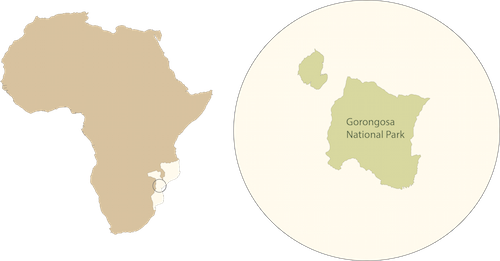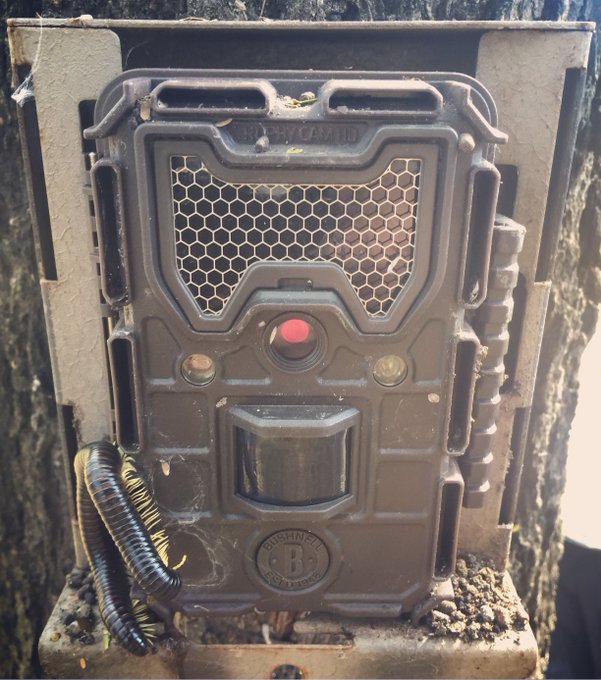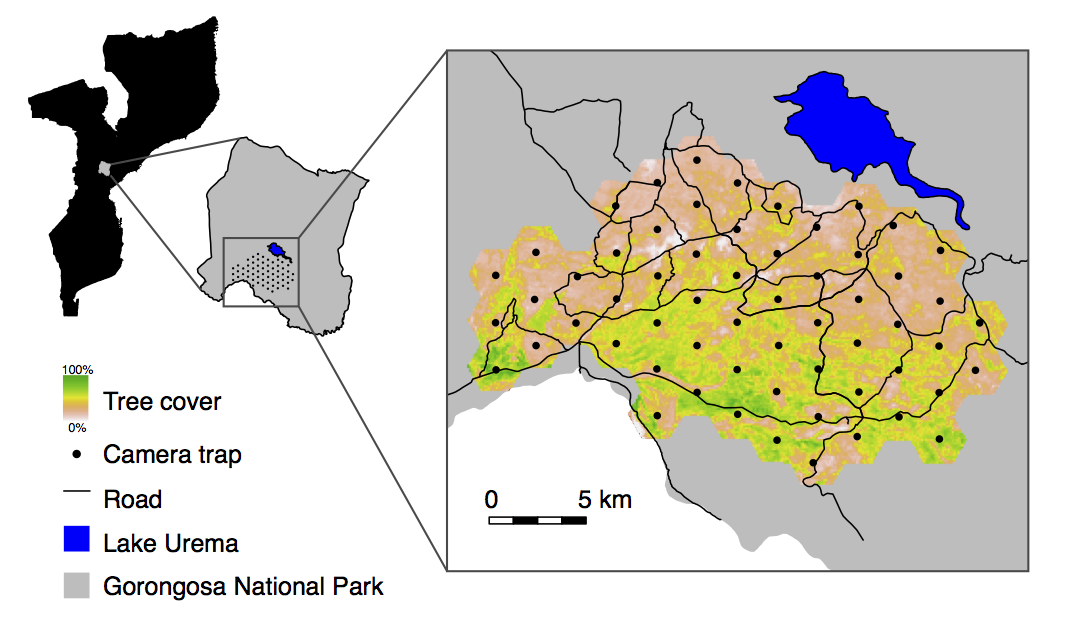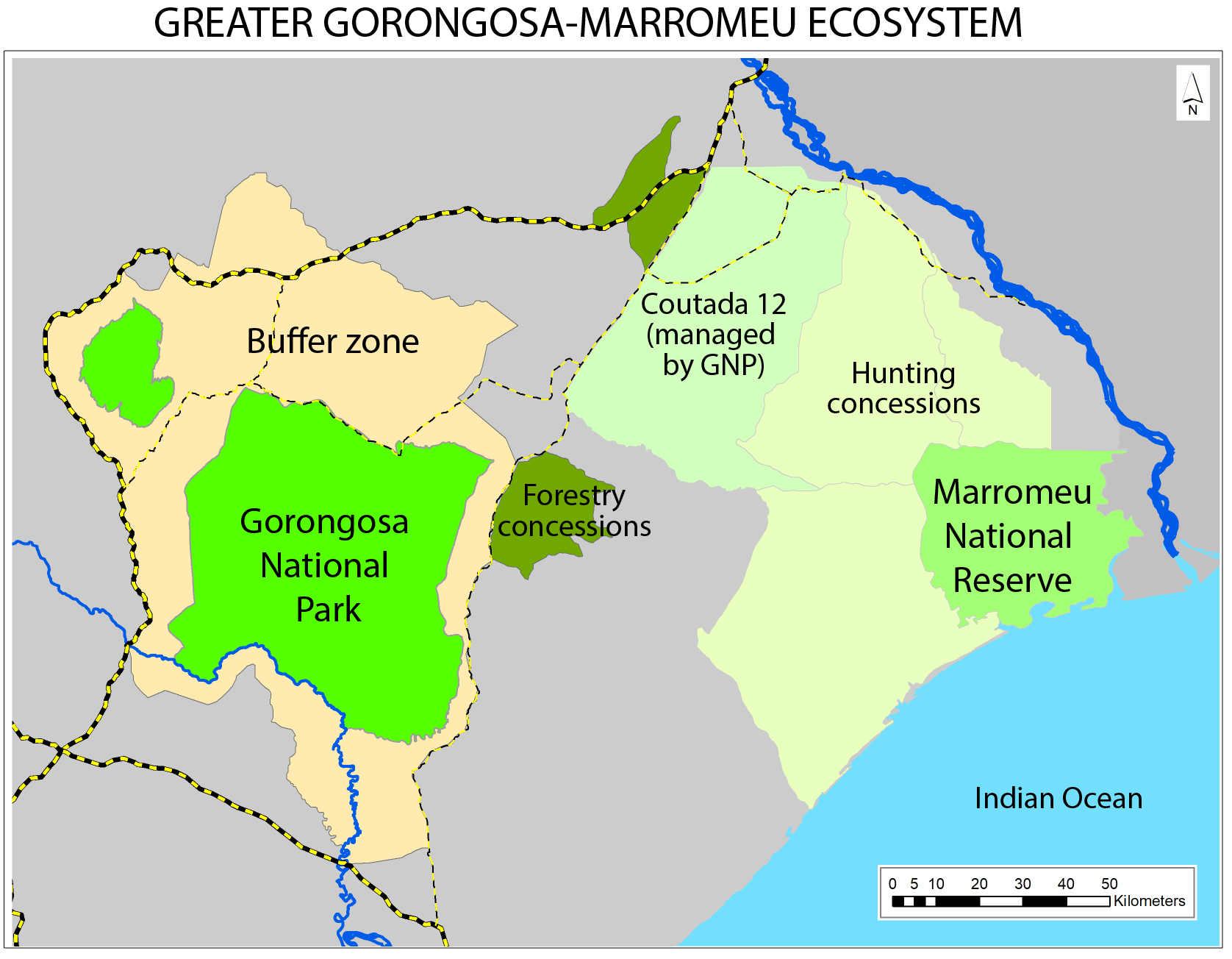Finished! Looks like this project is out of data at the moment!
Welcome! This project recently migrated onto Zooniverse’s new architecture. For details, see here.
Research
Gorongosa National Park
 | Located in the southern end of the East African Rift Valley, Gorongosa National Park in Mozambique was once home to large numbers of iconic wildlife. After losing 90% of its large mammal populations during Mozambique’s civil war, Gorongosa is now an emblem of ecological rebirth. A large-scale conservation and restoration initiative has changed the trajectory of this important area. However, many large mammal populations remain vulnerable. As the country’s flagship national park, Gorongosa is a critical area for biodiversity conservation. Scientists are now working to discover which animal species are still in Gorongosa and understand where they are and how their populations are changing. |
 | Camera traps are battery-operated cameras that can be strapped to a tree that use motion sensors to snap photos when an animal moves in front of them. They are an important modern tool in wildlife ecology and conservation research and a cost-effective way to remotely monitor animal populations. Camera traps allow for the collection of data on the entire wildlife community, collecting data in the night and day, and over multiple seasons. Over the long term, continuous camera trap monitoring allows us to track changes in the ecosystem as restoration progresses. |
Research Goals
At Gorongosa, we are using camera traps to address multiple research and conservation objectives.
1. Long-term monitoring of wildlife in the core area of Gorongosa National Park
To plan for conservation, we need to understand how Gorongosa wildlife responds to changes in the environment over space and time. We are using a grid of 60 cameras that has been in operation since 2016. The camera data will help us identify trends in wildlife populations to inform management, especially as species continue to recover and new species are reintroduced into the park.

2. Wildlife surveys in the greater Gorongosa-Marromeu landscape
Habitat connectivity between Gorongosa National Park and other protected areas is critical to preserving the region’s exceptional biodiversity, from Mount Gorongosa to the Marromeu Reserve on Mozambique’s coast. Understanding and mapping potential corridors for large carnivore movement is essential to the recovery of a robust carnivore community in Gorongosa, which still includes lions (Panthera leo), and very recently a few leopards (Panthera pardus), hyenas (Crocuta crocuta), and wild dogs (Lycaon pictus). We are using camera traps to document leopard and other carnivore species in neighboring forestry and hunting reserves. In future years, we plan to expand our camera surveys to include new areas outside of the national park to better understand how human activity influences wildlife.

Short-term camera trap surveys are also incorporated into the park’s regular biodiversity surveys. The goal of these surveys is to document the diversity of all species in the various habitats and regions of the ecosystem. Camera traps deployed during the biodiversity surveys have captured photos species previously undocumented in the park since the war, such as the zorilla (Ictonyx striatus).
3. Insights into the conservation of important species
In Gorongosa National Park, several research groups are studying social behavior and population dynamics of key species of conservation concern, including elephants (Elephant Ecology Project), lions (Gorongosa Lion Project), and baboons (Paleo-Primate Project). Camera traps can be used to identify individual animals and understand their behavior.
Help us collect data
We have collected hundreds of thousands of photos (and counting), and we need your help to identify all the animals in these photos! The identifications that you record will build a data set that scientists can use to better understand which animals exist in Gorongosa, where they are, how they behave, and how the ecosystem is responding to restoration actions. This information helps us monitor the park’s recovery and identify key challenges. Ready to get started?
Image attributions for species menu exemplars not collected from our camera traps can be accessed here.